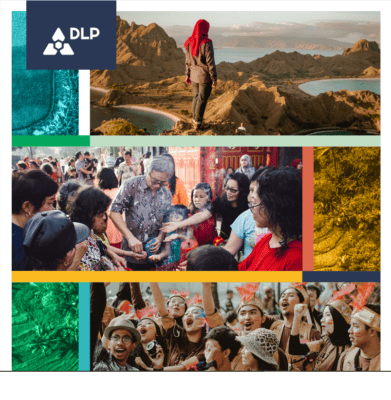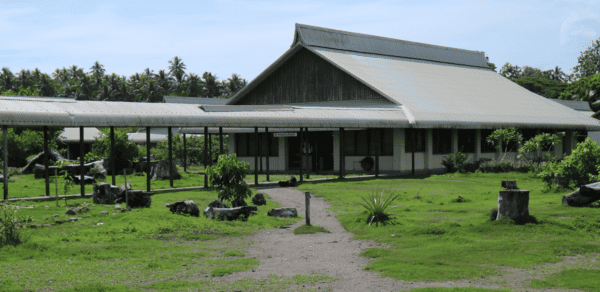Image: ‘Distorted perceptions’ (Photo: Bradley Wells).
Recently I found myself refereeing an intense debate about whether smiling at a public official could be considered bribery.
As odd as that sounds, the argument started off in a really logical place. I was lucky enough to be at the University of Cape Town, teaching at the Afrobarometer Summer School. It’s unique, combining methodological training with thematic courses, so that students learn not only how to test hypotheses but also discover what hypotheses are available to test. It aims to broaden the pool of African scholars who will make use of the Afrobarometer’s rich survey data. About 25 different countries, 20 of them African, were represented in my class of just over 50 students.
I was teaching a course that I called ‘Corruption from the grassroots’. It focused on how corruption is defined, understood and measured in international development circles. It looked at what survey data is available from Afrobarometer and other sources to test hypotheses about the causes and consequences of corruption. This material happened to be at my fingertips since I’ve spent the last two-and-a-bit years looking at cross-national survey data on corruption with Richard Rose at the Centre for the Study of Public Policy.
I posed a question to illustrate how subjective conceptualisations of corruption can be: if you give a gift to a public servant when you meet them in a context other than their professional role – at a social or family event, for instance – can it be considered ‘corruption’?
A few of the group said a firm no. The rest of the class gave a conditional yes; if the gift was given with the intention of getting favourable service that they would otherwise not be entitled to, then it should be considered a bribe. So far, so good.
But the class erupted when someone asked whether his smiles to service providers should be banned as well. After all, he said, he certainly smiles in the hope that his smile will smooth the way; perhaps it will persuade the official in front of him to bend the rules slightly in his favour. It was a very lively discussion – and an excellent point.
I was left to reflect that corruption is both the easiest and the most challenging of subjects to lead a discussion on. Just about everyone has an opinion or personal insight worth sharing, and even an apparently dull, dry and technical topic such as how to define corruption will easily give way to vigorous debate. When you get lucky, as I did, with a brilliant group of engaged students, the joint jumps.
In another sense, however, it is tremendously difficult to convey what is actually known about the causes of corruption and what corruption causes. This is because most of what I and my fellow corruption researchers think we know about it rests on somewhat shaky methodological foundations.
Corruption research is dominated by studies that have relied on country-level perception-based measures, like the Corruption Perception Index, compiled largely from the perceptions of business consultants, experts and rating agencies. Attempts to measure corruption in this way have drawn a lot of criticism. Two challenges are particularly damning.
First is that such datasets probably overstate the degree of corruption the perceivers have actually experienced. Razafindrakoto and Roubaud (2006) showed that experts, asked to give an estimate of bribery rates in their own countries, grossly exaggerated the percentage of people who actually paid a bribe.
Second is that perceptions of corruption are probably influenced by a country’s stage of development. This means that experts might see a poorly performing economy and assume that corruption is rampant. Whether that is fair becomes untestable; in conflating the two, we cannot know what impact corruption has on the economy.
There are many other potential problems, but these two are surely enough. Why are we still relying on these measures?
Their dominance is often explained by the fact that they are readily available. A more likely reason for their popularity, to my mind, is that studies that use these measures generally confirm commonly held biases about the consequences of corruption. My suspicion is that eagerness to condemn corruption may have clouded willingness to scrutinize the evidence. So when we ask whether corruption harms democracy, stunts foreign investment or exacerbates inequality, many studies using perception-based measures simply confirm the apparently obvious answer – corruption is harmful, wastes aid money and hinders poverty reduction.
Bob Dylan once wrote, ‘don’t criticize what you can’t understand’. It’s a good maxim for those of us researching corruption, a field in which the parameters certainly are a-changin’. The old rush to denounce corruption is – hopefully – being replaced by a new consensus that we need to develop a more thorough understanding of it.
No methodological approach is without its limitations, but it is surely time to shelve perception-based measures of corruption. It is time to shine a brighter spotlight on what we’ve learned on the ground from qualitative research or from survey data, experimental analyses and the few objective measures of corruption that we have. Hopefully some of my students in Cape Town will be among those leading the way.
Can a smile be a bribe? No, said the majority, arriving without difficulty at an objective definition of a bribe as something exchanged (and often re-exchangeable) that has a measurable monetary value.
For me, and for the Afrobarometer students who are keen to research corruption, the scene is more than set. There is a lot to contribute, because so little is known.










